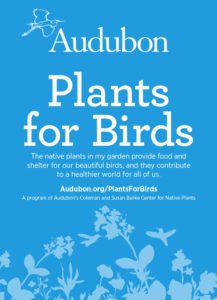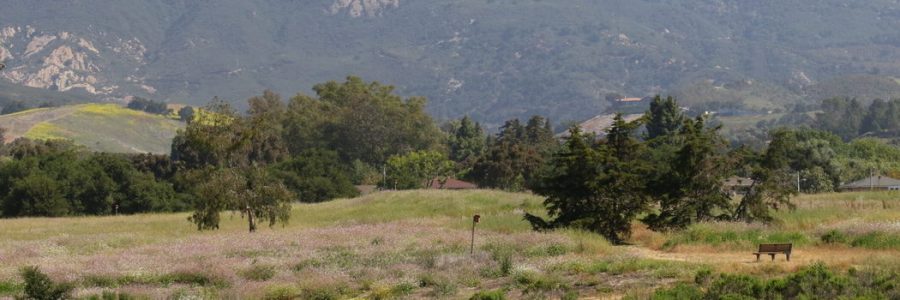Birds are delightful players on your garden stage and creating a native plant garden is one way you can bring in more species than ever before. Local birds are familiar with native plants, which provide them with the food, cover and shelter they need. Native berries and seeds are the perfect treats to keep these birds coming back for more, and they are further enticed by foods we may not notice, such as species of insects that rely on native plants. Caterpillars in particular are a big prize for parent birds trying to satisfy the hunger of a nest full of begging beaks. In addition to food, native plants provide optimal materials for nests. Birds collect twigs, dead leaves, needles, and webs from shrubs and trees, and strip fibers and bark from milk weed and other natives to make homes for their chicks. Native plants have a symbiotic relationship with birds, who get a beak full of food, then complete the cycle by spreading seeds that sprout into new plants.
Natives are a big win for gardeners as well. They are generally hardy, dependable, drought tolerant, and low maintenance. Most natives, though, are very particular about where they grow, so It is important to buy plants that fit your local ecosystem. The National Audubon Society has made it easy for gardeners to pick and choose from a list of appropriate plants for each bird species. Just go to www.audubon.org/native-plants, type in your zip code, and the site pops up a list of plants, trees and flowers for your specific area and state, which you can print out to use as your guide. The list gives the plant’s common name, scientific name and the birds that the plant might attract.
When my home on three acres burned down in the Jesusita Fire, it gave us a fresh opportunity to change our landscaping to mostly natives. I found that the Audubon Society’s plant list for the zip code of my area matched exactly the plants we used under the direction of Carol Bornstein, who worked at the Santa Barbara Botanical Gardens for years. Carol has written two helpful books on native plants: California Native Plants for the Garden and Reimagining the California Lawn.
Bruce Reed is an award-winning horticulturalist and native plant expert at Santa Barbara Botanical Garden. He is an excellent source of expertise on designing with native plants that work in our area. Bruce has suggested three native plant nurseries locally as great resources for your new garden:
 Garden Growers Nursery
Garden Growers Nursery
(Santa Barbara Botanic Garden)
1212 Mission Canyon Road
Santa Barbara, CA 93105
(805) 682-4726 x114
Manzanita Nursery
880 Chalk Hill Road
Solvang, CA 93463
(805) 688-9692
Island View Nursery
3376 Foothill Rd
Carpinteria, CA 93013
Phone: (805) 684-0324
If you are after even more of a diversity of birds, adding a water source such as a bird bath or fountain to your native garden is essential. Wire cages are important to use to protect your new plants’ roots if you live in a place where there are gophers (virtually everywhere!)
Planting natives and restoring balance to the Earth in our own yard has provided tremendous solace to our souls and soothed our outlook on life after a very traumatic experience. The beauty, presence and magic of the songs of birds is ever-present now. We are commonly visited by finches, doves, bluebirds, jays, sparrows, orioles, owls, woodpeckers, hawks, turkey vultures, grosbeaks, roadrunners and more. I cannot think of a more meaningful gift to ourselves and to the world.
By the way, Audubon will give you a very cool sign for $25 to advertise your garden to your friends and neighbors. See the link at the bottom of the National Audubon web page listed above for information on how to get one.
Spread the word about the power of native plants and help grow a better world for birds!

